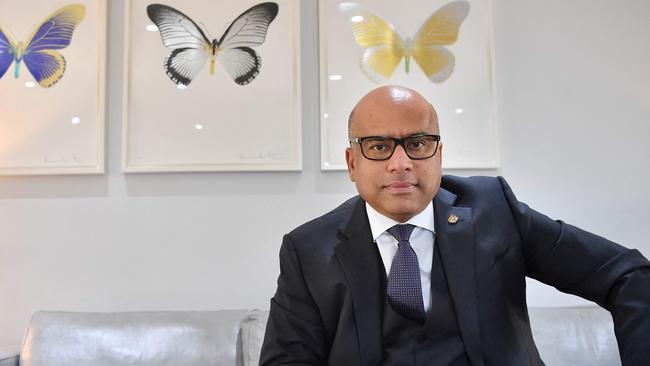
In 2017, Gupta purchased from the receiver the old OneSteel operation that had been spun off from BHP. He paid $700 million. Today that enterprise would be worth about $4 billion, a $3.3 billion paper profit in just four years.
When workers at the Whyalla steel plant read that the operation is endangered by the Gupta mess, they should simply laugh. As long as they don’t again revert to stupid work practices, their jobs are among the safest in the nation because the business is booming.
There could be an ownership change, but any new owner will want to continue the operations.
Whyalla is the envy of the steel world, albeit that its plant is old.
The other half of the old BHP Steel business, BlueScope, must be lamenting that it didn’t pick up the OneSteel enterprise (towards the end it was called Arrium) for such a low price. Having missed it once, it will be hard for BlueScope to bid again at today’s levels.
At the heart of the collapse of OneSteel was the “enterprise agreement from hell”, which made it impossible for management to run the Whyalla plant.
In 2017, BlueScope itself was struggling to make its Port Kembla steel operation work in what were difficult times. BlueScope had its own poor work practice problems and did not want its waters muddied by a new set of challenges.
Had Gupta financed the OneSteel deal (and other global transactions) in a conventional way, he would now be laughing and probably considering further investment in the enterprise.
But he made a fundamental business mistake. While his initial financing via Greensill made sense, over time he developed a friendship with Lex Greensill and allowed his global steel business, including Whyalla, to become enmeshed in the Greensill mess.
One of the great dangers of operating a business – whether small or large – is becoming too closely linked with friends. Suddenly, deals are entered into on a friendship basis that would never be contemplated by independent parties.
It is possible the sale of assets in the US and elsewhere and the refinancing of the Whyalla operation will see Gupta survive, but nobody knows the extent of the Gupta obligations to Greensill.
With hindsight, the old OneSteel was a brilliant base business damaged by later bad management and the fact that BHP loaded it with too much debt.
The jewel in the crown was not so much Whyalla but the network now called InfraBuild, which comprises a series of successful businesses including:
● Australia’s largest maker of steel mesh for concrete slabs, including the ARC business.
● Electric arc steel furnaces in Melbourne and Sydney – the former Smorgon steel operation.
● The old Tubemakers steel pipe business, which was once an associate of BHP.
● One of Australia’s biggest steel distribution enterprises.
● The Savage River iron ore mines in Tasmania that may become a global leader in “green steel” via the Tasmanian hydro network.
● The Tasmanian Electro Metallurgical Company (TEMCO), Australia’s only manganese alloy smelter supplying more than 50 companies around the world.
Given the Australian boom in construction, the InfraBuild business is booming. It has no financing from Greensill and is worth about $3 billion.
Separate to InfraBuild is the Whyalla steelworks worth at least $1 billion, leaving aside its unknown Greensill obligations.
Whyalla has its own iron ore mines in the Middleback ranges 54km away. Middleback ore not only feeds the Whyalla steel plant, but supplies BlueScope in Port Kembla. It ships metallurgical coal from Whyalla’s own NSW mines and take it back to South Australia. Unlike most global steelmakers, Whyalla has therefore been a beneficiary of the iron ore boom. And right now it can’t make enough construction steel to satisfy the demand.
Over the past year, steel prices have risen about 25 per cent and the rate is accelerating. A great deal of the price increase has gone to the bottom line given Whyalla has its own iron ore.
It’s true the Whyalla plant is old but it was built by BHP when it was one of the world’s top engineering companies.
No one knows what will be left of the Gupta enterprises after it extracts itself from Greensill.
But the huge paper profit means that Gupta has a chance of survival. If Whyalla and InfraBuild have to be sold, there will be a string of buyers. But my guess is that Gupta will try to hold them.





Hidden behind the mire of the Greensill collapse is one of Australia’s richest industrial coups. And that coup is so large it could save the empire of Sanjeev Gupta depending on how deep he is caught in the collapse of his mate Lex Greensill.